Call: (781)963-6077
General Dentistry
Digital Dental X-Ray
Dental X-rays have come a long way. Todays dental X-rays are safer, faster, more comfortable and more informative than the X-rays of years past. Digital X-rays, one of the latest and most advanced dental technologies, produce high-quality images of your teeth that can be viewed instantly by you and your dentist on an LCD monitor. Digital X-rays reduce radiation by up to 90% and provide exceptional diagnostic information to ensure that potential problems are caught at their earliest stages. Intraoral photography is another alternative to traditional dental X-rays. With intraoral photography, problems such as cavities, fractures and discoloration are captured through clear and sharp photographic images that are taken with a 35mm or digital camera.
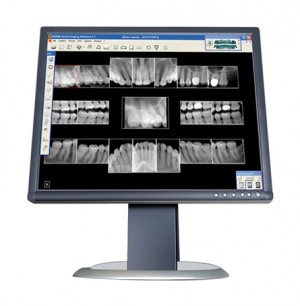
Teeth Cleaning
No matter how often you brush and floss, plaque and tartar deposits can still build up on your teeth. A professional teeth cleaning is the single most effective way to remove these deposits and prevent them from causing more serious problems in the future. While a traditional teeth cleaning involves manually scraping away these deposits with special dental tools, advances in dental technologies now give you more options for teeth cleaning.
A laser teeth cleaning, also known as an ultrasonic cleaning, is a popular alternative to traditional teeth cleaning. With a laser teeth cleaning, an ultrasonic scaler (rather than a manual probe) is used to remove deposits, kill harmful microbes and eliminate bacteria around the teeth and gums through high-frequency sound waves. Many patients find laser teeth cleaning more comfortable than traditional teeth cleaning because it is quicker, quieter and pain-free.
A deep cleaning may be recommended if excessive plaque and tartar deposits have developed below the gum line. Deep cleaning, also known as scaling and root planing, involves a two-part process: first, the stubborn deposits are removed, and then the root surfaces are smoothened. A deep cleaning helps prevent periodontal disease and restores gum tissues to a healthy state.
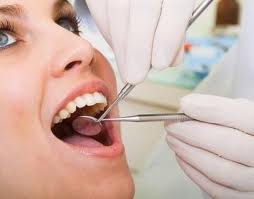
Oral Cancer Screening
Oral cancer affects nearly 35,000 Americans every year. The keys to surviving oral cancer are early detection and early treatment. This starts with a regular oral cancer screening – at least once every six months. An oral cancer screening takes just minutes, is pain-free and can be performed during regular dental exams. If you are male, a regular oral cancer screening is especially critical, since oral cancer is more than twice as common in men as it is in women. Other people at high risk of oral cancer include people over the age of 60, tobacco smokers and heavy drinkers.

White Fillings
If your silver amalgam fillings make you feel self-conscious when you smile, or it's simply time to replace them, consider white fillings. White fillings are just as durable as they are attractive! Made of composite resin, white fillings match the natural color of your teeth and are an excellent option for small to mid-sized cavities. White fillings are strong, stain-resistant and require less removal of your tooth structure than amalgam fillings.
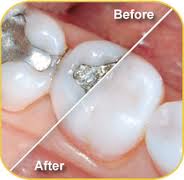
Dental Crowns
A dental crown is a tooth-shaped “cap” that is placed over a tooth. A crown is used to restore the size, shape, color and strength of a tooth, improving both appearance and function. Crowns are typically used following restorative procedures such as root canals or large fillings when there is not much of the natural tooth remaining. Crowns can also be placed cosmetically, or with implants and bridges.
To make a crown, we will first take an impression or a mold of your tooth. We will then send this mold to the lab, where a custom crown will be created for you; this process takes about two weeks. In the meantime, the dentist will prepare the tooth for the crown and place a temporary crown.
A well taken-care-of crown can last 5 or more years. It is very important to maintain proper home care with any crowns. Regular flossing and brushing is crucial, because the buildup of plaque and debris could make the crown break down prematurely. Clenching or grinding of the teeth can also shorten the life span of the crown; a mouth guard could help prevent this from happening.
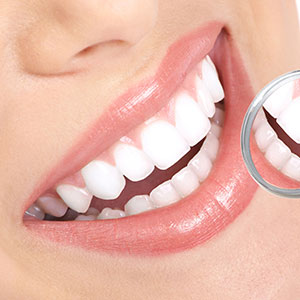
Porcelain Dental Crowns
Although dental crowns can be made of a variety of materials, including stainless steel, gold and silver, nothing looks better than a porcelain dental crown. Porcelain dental crowns match the natural color of your teeth and are virtually undetectable by the naked eye. And because they're metal-free, porcelain dental crowns are an excellent option for patients with metal allergies. Best of all, porcelain crowns don't just look beautiful – they're long-lasting, too!
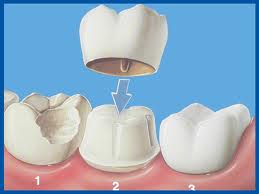
Dental Bridges
Dental bridges have been used for centuries to replace missing teeth. Today, dental bridges are still considered one of the most durable, conservative and cost-effective options for bridging the gap between a missing tooth and surrounding teeth. Comprised of two anchoring teeth and a replacement tooth, dental bridges help prevent surrounding teeth from drifting out of position, improve chewing and speaking, and help keep your natural face shape intact.
There are three types of dental bridges: 1) traditional dental bridges, 2) cantilever dental bridges, and 3) Maryland bridges. Traditional bridges have either dental crowns or dental implants on either side of the missing tooth, plus a replacement tooth, which is held in place by a post-like structure called a dental abutment. Cantilever dental bridges are used in cases where there are surrounding teeth only on one side of the missing tooth. Maryland bridges are made of a specialized resin that is bonded to a metal framework and cemented to the enamel of surrounding teeth.
Dental bridges typically take 2-3 weeks to complete and are less invasive than other options, such as dental implants. With good oral hygiene and regular dental visits, dental bridges can last up to 30 years.
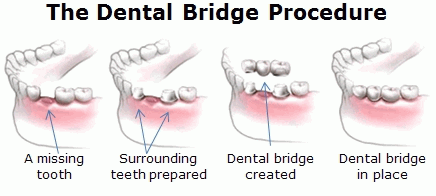
Dentures
Using dentures to replace missing teeth is not only great for your oral health, it's a great way to look and feel younger! Today, there are a variety of natural-looking and comfortable dentures for patients who need to replace missing teeth. Made of a gum-colored plastic resin or acrylic base and either resin or porcelain replacement teeth, dentures are custom designed to fit your mouth. If you have several teeth or all teeth missing on the upper or lower jaw, full dentures may be your best option. Partial dentures, which can be either fixed or removable, are great for patients who have several missing teeth scattered along the upper or lower jaw.
The process of getting dentures may take a few months and several dental visits. In some cases, however, same-day dentures are also possible. With same-day dentures, the dentures are created right in the dentist's office instead of at an off-site laboratory. Same-day dentures aren't for everyone, though. If your dentures require a lot of customization, same-day dentures may not be right for you.
Just as with your natural teeth, dentures require daily maintenance. With regular wear and tear, your dentures can last 5-7 years. During that time, you may need periodic denture relines to accommodate changes in the contours of your mouth. Regular denture relines involve resurfacing the base to ensure that your dentures fit and function perfectly. If you break your dentures, it's critical to bring them to your dentist for professional denture repair. Home denture repair kits can cause more damage and be even more costly to fix.
Gum Disease Treatment
Red, swollen gums are a red flag for one thing: gum disease. If you have the symptoms, you're not alone. More than 80% of adults have some form of gum disease. Fortunately, there are many effective and pain-free gum disease treatments. For gingivitis, the mildest form of gum disease, treatment typically involves a thorough dental cleaning, followed by daily brushing and flossing. Advanced gum disease, also known as periodontal disease, requires scaling and root planing to remove stubborn deposits below the gum line. Laser gum surgery, a new alternative to scaling and root planing, uses beams of high-speed light to remove plaque and tartar buildup. If non-surgical methods of gum disease treatment are ineffective, a gingivectomy, or periodontal surgery, may be necessary.
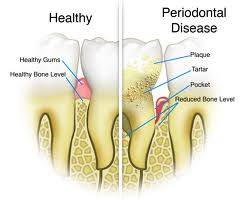
Endodontics
The inside of a tooth contains soft tissue, which is the nerves of the tooth, blood tissue and connective tissue. When an infection or trauma to the tooth occurs, this can damage the pulp. Options are to either extract (remove) the tooth, or to have Root Canal Therapy. In most cases the preferred option is to save the tooth.
Most dentists will preform root canals, however depending on the condition of the tooth and the shape of the tooth and roots, you may need to see a specialist. An Endodontist is a dentist that specialized in dental pulp and has the necessary tools that a general dentist may not have. You can expect your root canal to take several hours or a few appointments to complete. It is very important that you finish the procedure once it is started or you will risk losing the tooth completely.
Once the root canal procedure is completed, you may need a post and crown to fully restore the tooth. If left uncompleted, the weakened tooth will be prone to chip, fracture, and become discolored over time.
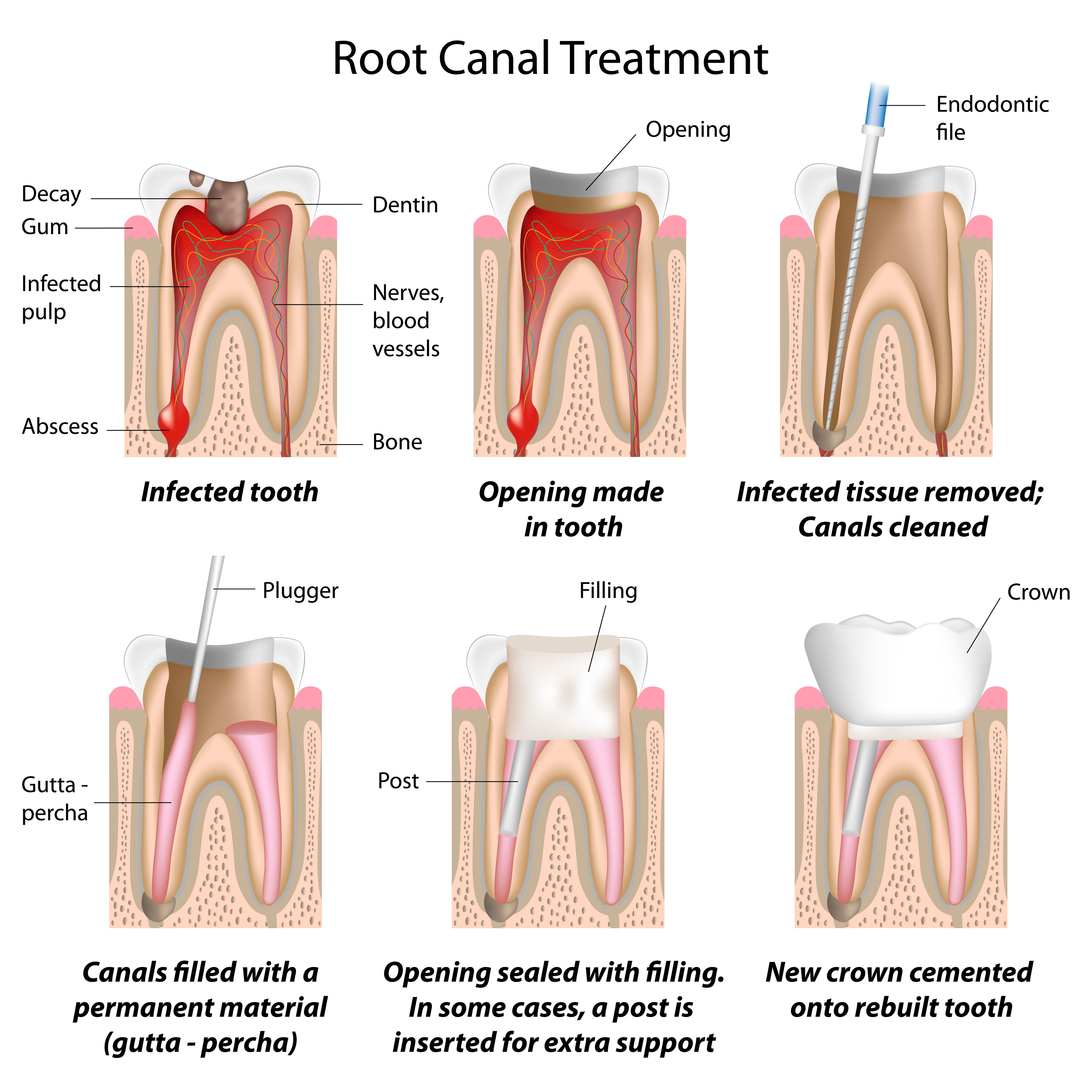
Pediatric Dentistry
Catering to the dental needs of kids requires a special touch. Pediatric dentists are specially trained to treat the oral health needs of children, from infancy through their teenage years. This involves in-depth knowledge of children's behavior, as well as their growth and development. Pediatric dental offices are also designed to make kids feel comfortable and relaxed – with plenty of toys, activities and a warm, inviting and fun décor.

Extractions
Tooth extraction can be performed with local anesthesia if the tooth is exposed and appears to be easily removable in one piece. The dentist or oral surgeon uses an instrument called an elevator to luxate, or loosen, the tooth; widen the space in the underlying bone; and break the tiny elastic fibers that attach the tooth to the bone. Once the tooth is dislocated from the bone, it can be lifted and removed with forceps.
If the extraction is likely to be difficult, a general dentist may refer the patient to an oral surgeon. Oral surgeons are specialists who are trained to administer nitrous oxide (laughing gas), an intravenous sedative, or a general anesthetic to relieve pain. Extracting an impacted tooth or a tooth with curved roots typically requires cutting through gum tissue to expose the tooth. It may also require removing portions of bone to free the tooth. Some teeth must be cut and removed in sections. The extraction site may or may not require one or more stitches (sutures) to close the incision.
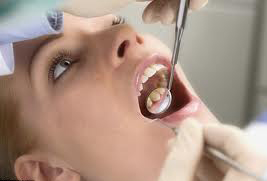
Night Guards & Sports Guards
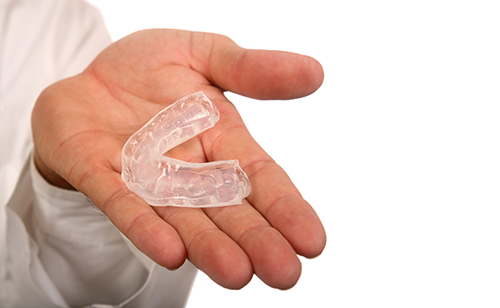
Bruxism is a habit of grinding or clenching of the teeth, most of the time at night, while sleeping. Because of this, people wake up with a dull head ache, stiffness or soreness in the jaw, an earache, and/or a tooth ache. Grinding can damage your existing restorations, cause cracks or fractures of the teeth, wear away the enamel of a tooth, causing sensitivity. A visit to Aqua Dental can determine if you are in fact grinding and if a night guard would be the right treatment for you. A night guard is a clear, thin, custom-made, removable device made to fit over your upper teeth as you sleep. With this night guard you can sleep soundly, knowing that even if you do grind, you will not be causing any damage, because your upper and lower teeth will not touch while you sleep.
